
How to Use Arduino UNO R4 WiFi: Examples, Pinouts, and Specs
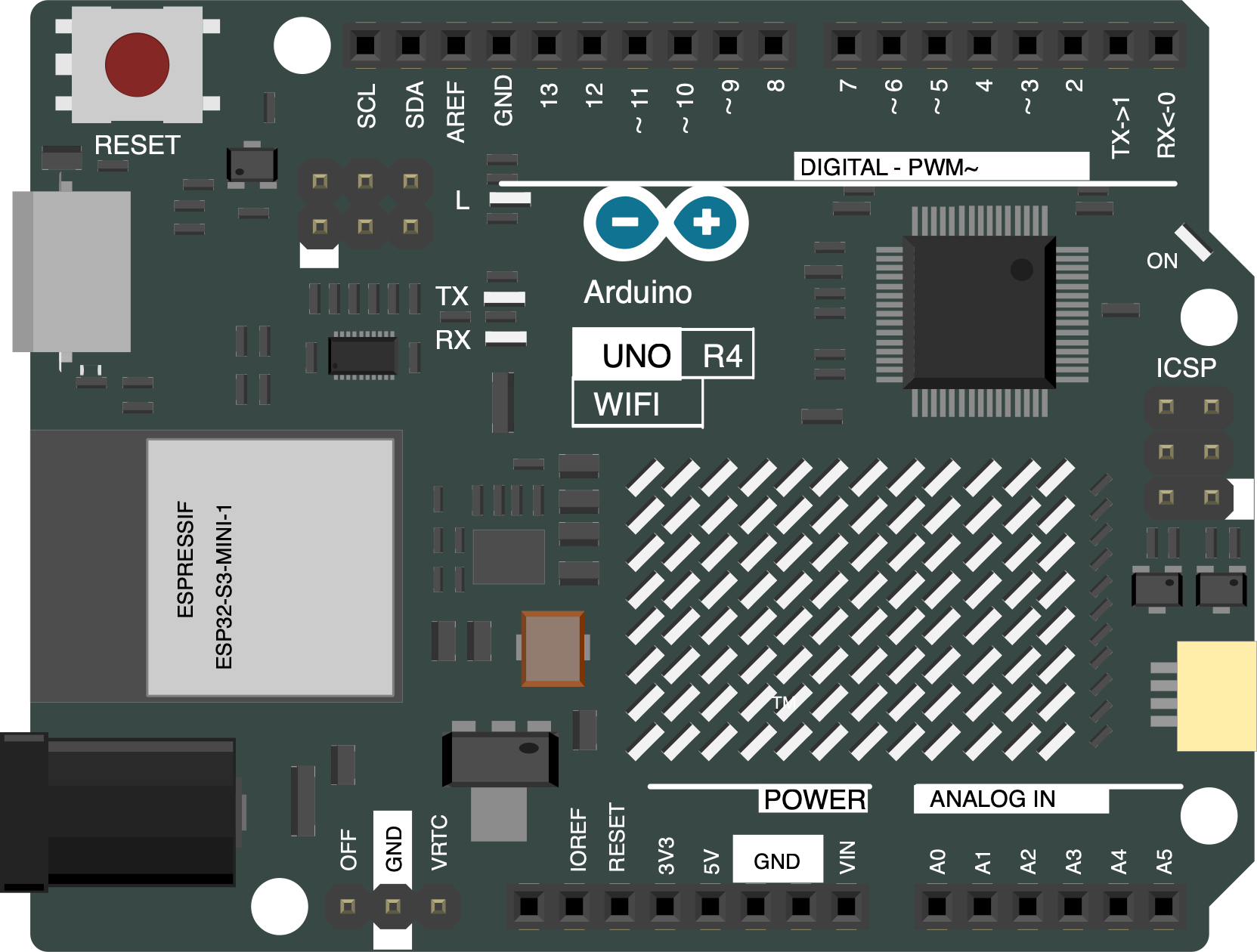
 Design with Arduino UNO R4 WiFi in Cirkit Designer
Design with Arduino UNO R4 WiFi in Cirkit DesignerIntroduction
The Arduino UNO R4 WiFi is a microcontroller board based on the ATmega328P, designed to simplify the development of Internet of Things (IoT) projects. It features built-in WiFi capabilities, making it ideal for wireless communication and remote control applications. With 14 digital input/output pins, 6 analog inputs, and a USB interface for programming, the UNO R4 WiFi is a versatile and user-friendly platform for both beginners and experienced developers.
Explore Projects Built with Arduino UNO R4 WiFi
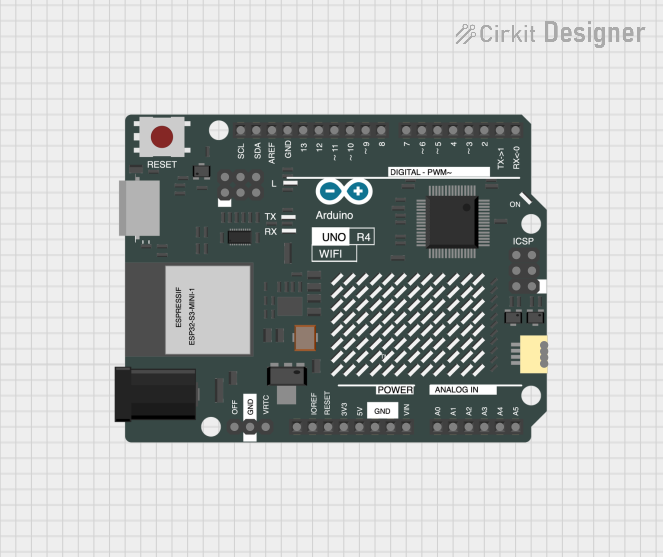
 Open Project in Cirkit Designer
Open Project in Cirkit Designer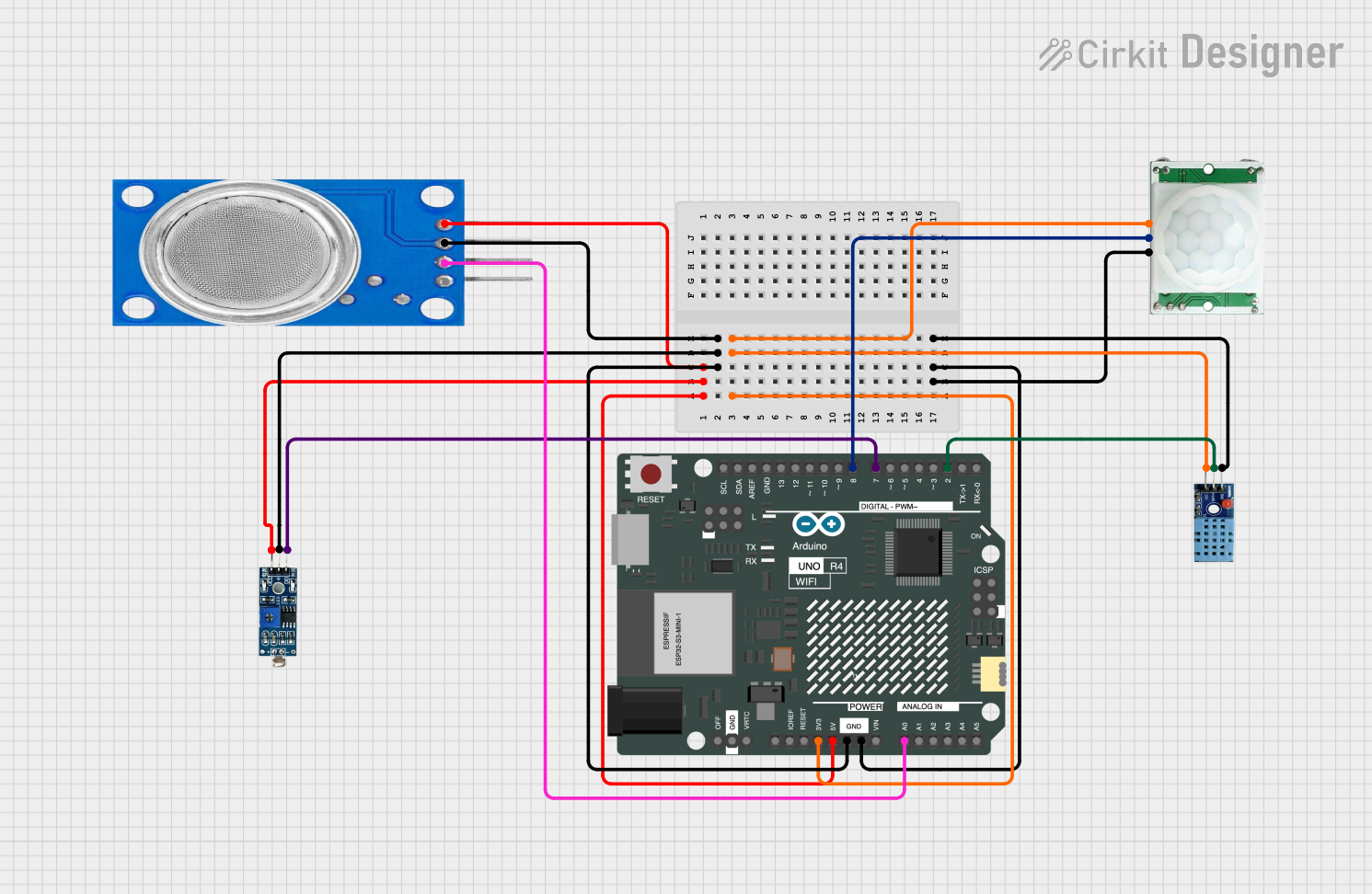
 Open Project in Cirkit Designer
Open Project in Cirkit Designer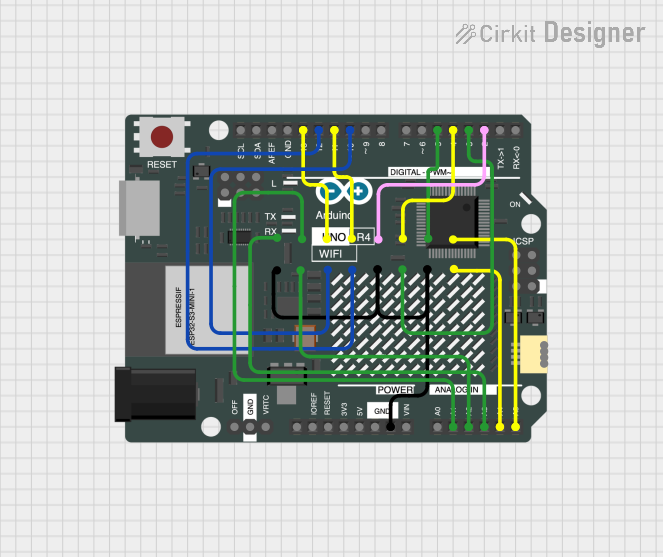
 Open Project in Cirkit Designer
Open Project in Cirkit Designer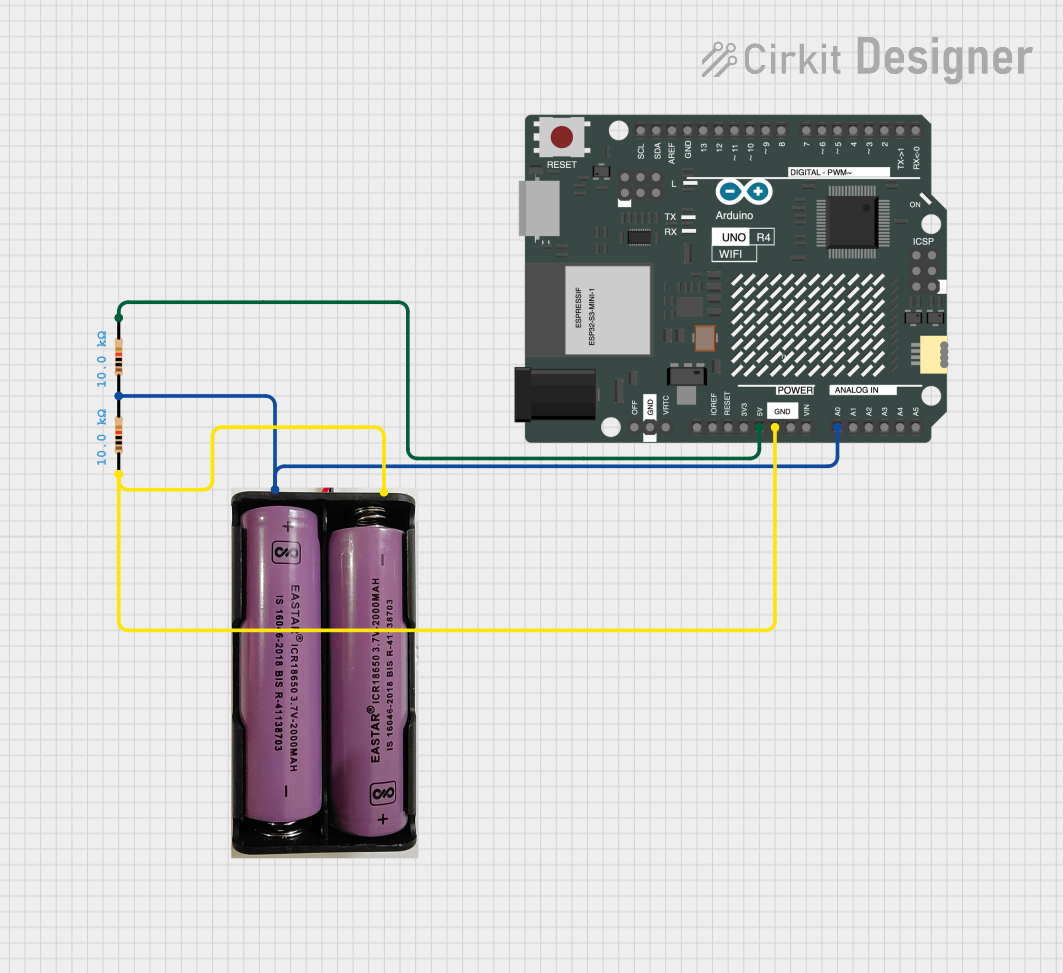
 Open Project in Cirkit Designer
Open Project in Cirkit DesignerExplore Projects Built with Arduino UNO R4 WiFi

 Open Project in Cirkit Designer
Open Project in Cirkit Designer
 Open Project in Cirkit Designer
Open Project in Cirkit Designer
 Open Project in Cirkit Designer
Open Project in Cirkit Designer
 Open Project in Cirkit Designer
Open Project in Cirkit DesignerCommon Applications and Use Cases
- IoT devices and smart home automation
- Wireless sensor networks
- Remote monitoring and control systems
- Prototyping and educational projects
- Data logging and cloud integration
Technical Specifications
Key Technical Details
| Specification | Value |
|---|---|
| Microcontroller | ATmega328P |
| Operating Voltage | 5V |
| Input Voltage (recommended) | 7-12V |
| Input Voltage (limit) | 6-20V |
| Digital I/O Pins | 14 (6 PWM outputs) |
| Analog Input Pins | 6 |
| DC Current per I/O Pin | 20 mA |
| Flash Memory | 32 KB (0.5 KB used by bootloader) |
| SRAM | 2 KB |
| EEPROM | 1 KB |
| Clock Speed | 16 MHz |
| WiFi Module | Integrated |
| USB Interface | USB Type-B |
Pin Configuration and Descriptions
| Pin Number | Pin Name | Description |
|---|---|---|
| 1-14 | Digital Pins | General-purpose I/O pins (6 support PWM output) |
| A0-A5 | Analog Pins | Analog inputs (10-bit resolution) |
| VIN | VIN | Input voltage to the board when using an |
| external power source (7-12V recommended) | ||
| 3.3V | 3.3V Output | Provides 3.3V output for external components |
| 5V | 5V Output | Provides 5V output for external components |
| GND | Ground | Ground connection |
| RESET | Reset | Resets the microcontroller |
| TX/RX | Serial Pins | Transmit (TX) and Receive (RX) for serial |
| communication |
Usage Instructions
How to Use the Arduino UNO R4 WiFi in a Circuit
Powering the Board:
- Connect the board to your computer using a USB Type-B cable for programming and power.
- Alternatively, use an external power supply (7-12V) via the VIN pin or DC barrel jack.
Programming the Board:
- Install the Arduino IDE from the official website.
- Select "Arduino UNO" as the board type in the IDE.
- Write your code and upload it to the board using the USB connection.
Using WiFi Capabilities:
- The built-in WiFi module allows the board to connect to wireless networks.
- Use the
WiFilibrary in the Arduino IDE to configure and manage WiFi connections.
Connecting Components:
- Use the digital and analog pins to connect sensors, actuators, and other peripherals.
- Ensure that the current and voltage requirements of connected components are within the board's limits.
Important Considerations and Best Practices
- Avoid exceeding the maximum current rating (20 mA) for each I/O pin to prevent damage.
- Use pull-up or pull-down resistors for stable digital input signals.
- When using WiFi, ensure that the board is within range of the wireless network.
- Use a decoupling capacitor near the power pins of external components to reduce noise.
- Always double-check connections to avoid short circuits or incorrect wiring.
Example Code for WiFi Connection
Below is an example of how to connect the Arduino UNO R4 WiFi to a wireless network and print the IP address:
#include <WiFi.h> // Include the WiFi library
const char* ssid = "YourNetworkSSID"; // Replace with your WiFi network name
const char* password = "YourNetworkPass"; // Replace with your WiFi password
void setup() {
Serial.begin(9600); // Initialize serial communication at 9600 baud
Serial.println("Connecting to WiFi...");
// Attempt to connect to the specified WiFi network
WiFi.begin(ssid, password);
// Wait until the connection is established
while (WiFi.status() != WL_CONNECTED) {
delay(1000); // Wait 1 second before retrying
Serial.print(".");
}
Serial.println("\nConnected to WiFi!");
Serial.print("IP Address: ");
Serial.println(WiFi.localIP()); // Print the assigned IP address
}
void loop() {
// Add your main code here
}
Troubleshooting and FAQs
Common Issues and Solutions
The board is not detected by the Arduino IDE:
- Ensure the correct USB drivers are installed.
- Check that the correct COM port is selected in the IDE.
- Try using a different USB cable or port.
WiFi connection fails:
- Verify the SSID and password are correct.
- Ensure the WiFi network is within range.
- Restart the board and router if necessary.
Components connected to the board are not working:
- Check the wiring and connections.
- Ensure the components are compatible with the board's voltage and current ratings.
- Test the components individually to rule out hardware issues.
FAQs
Can I power the board with a battery?
Yes, you can use a 9V battery connected to the VIN pin or DC barrel jack.What is the range of the WiFi module?
The range depends on the environment but is typically around 30-50 meters indoors.Can I use the board without WiFi?
Yes, the board functions like a standard Arduino UNO when WiFi is not used.Is the UNO R4 WiFi compatible with existing Arduino shields?
Yes, it is compatible with most Arduino shields designed for the UNO form factor.